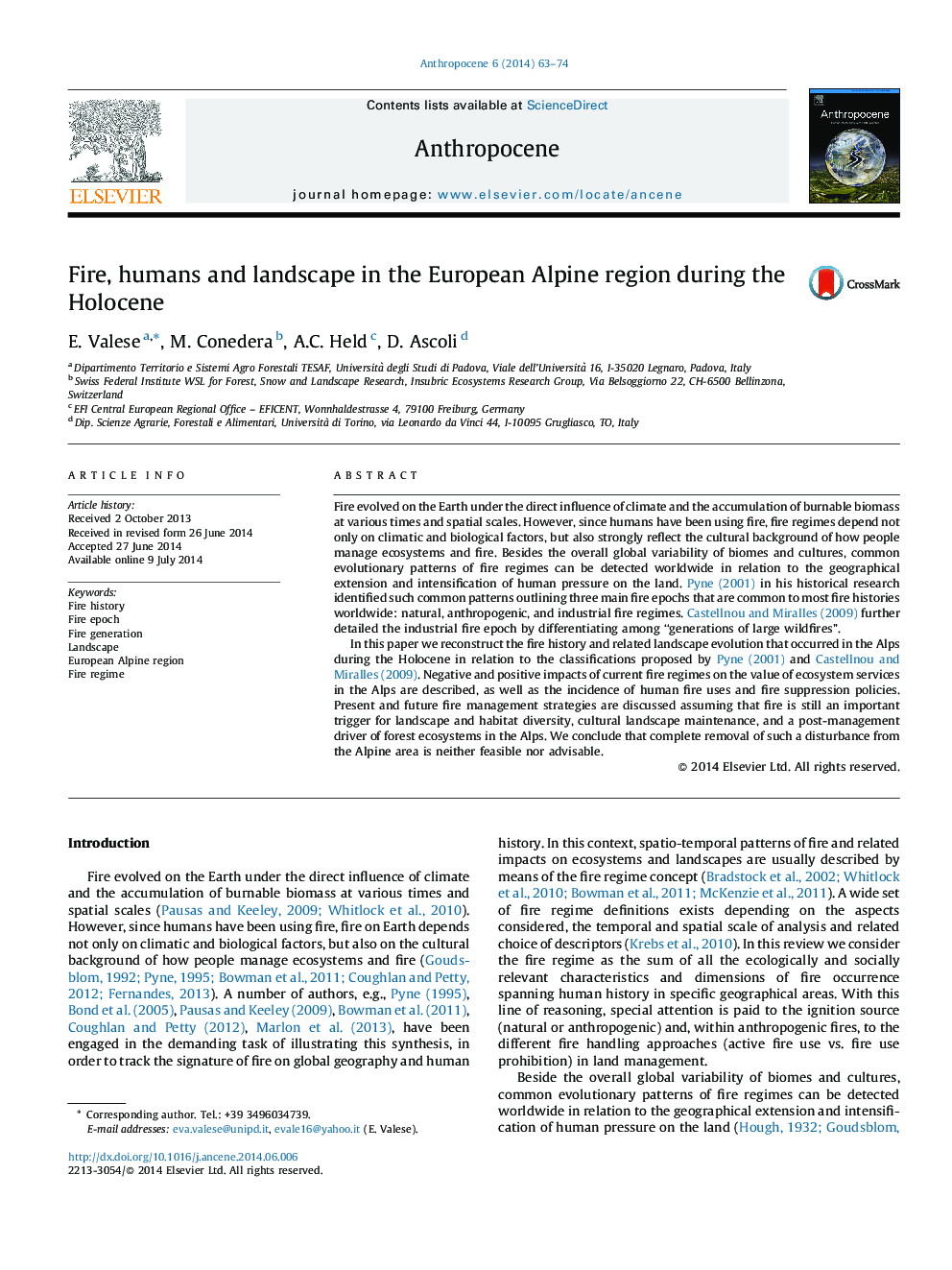| کد مقاله | کد نشریه | سال انتشار | مقاله انگلیسی | نسخه تمام متن |
|---|---|---|---|---|
| 4461890 | 1621519 | 2014 | 12 صفحه PDF | دانلود رایگان |

• First review on the connection between fire history, humans and landscape in the European Alpine region.
• The frame given by fire epochs and generations of large fires enables comparisons with other geographies and put in evidence specificities.
• We track present challenges in fire management in the Alps and identify potential strategies for approaching future scenarios.
• The exclusion of fire from the Alpine landscapes is neither feasible nor advisable.
Fire evolved on the Earth under the direct influence of climate and the accumulation of burnable biomass at various times and spatial scales. However, since humans have been using fire, fire regimes depend not only on climatic and biological factors, but also strongly reflect the cultural background of how people manage ecosystems and fire. Besides the overall global variability of biomes and cultures, common evolutionary patterns of fire regimes can be detected worldwide in relation to the geographical extension and intensification of human pressure on the land. Pyne (2001) in his historical research identified such common patterns outlining three main fire epochs that are common to most fire histories worldwide: natural, anthropogenic, and industrial fire regimes. Castellnou and Miralles (2009) further detailed the industrial fire epoch by differentiating among “generations of large wildfires”.In this paper we reconstruct the fire history and related landscape evolution that occurred in the Alps during the Holocene in relation to the classifications proposed by Pyne (2001) and Castellnou and Miralles (2009). Negative and positive impacts of current fire regimes on the value of ecosystem services in the Alps are described, as well as the incidence of human fire uses and fire suppression policies. Present and future fire management strategies are discussed assuming that fire is still an important trigger for landscape and habitat diversity, cultural landscape maintenance, and a post-management driver of forest ecosystems in the Alps. We conclude that complete removal of such a disturbance from the Alpine area is neither feasible nor advisable.
Journal: Anthropocene - Volume 6, June 2014, Pages 63–74